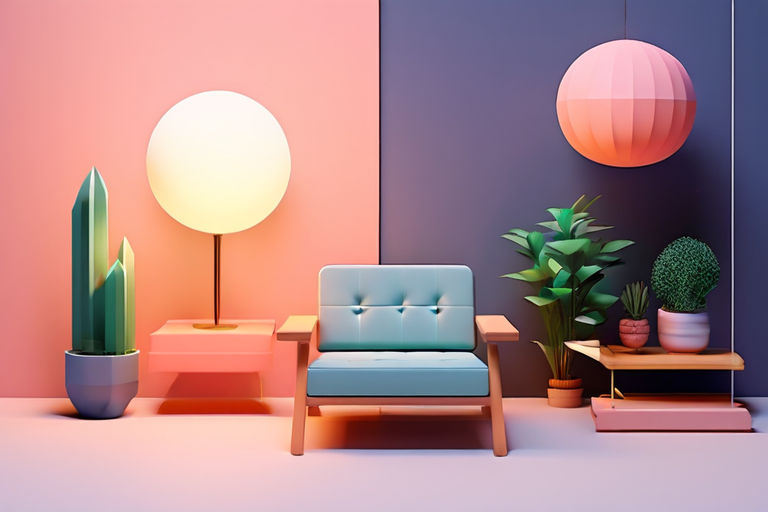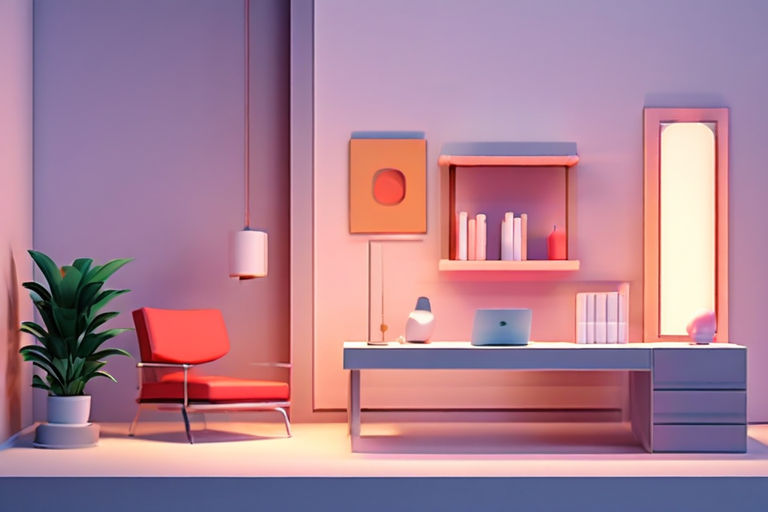Finding moments of peace and serenity is essential for our well-being in the hustle and bustle of our daily lives. Creating a mindful space in your home can be a transformative experience, allowing you to recharge, relax, and reconnect with yourself.
The Power of Mindful Spaces
Before we delve into the how-to’s, let’s take a moment to understand why creating a mindful space is so crucial. Studies have shown that our environment significantly impacts our mental and emotional well-being. A cluttered and chaotic space can increase stress levels and decrease productivity. On the other hand, a thoughtfully designed and mindful space can promote calmness, clarity of mind, and overall happiness.
Benefits of a mindful space:
- Reduced stress: A clutter-free environment reduces visual chaos and promotes a sense of calm.
- Improved focus: A well-organized space allows for better concentration and productivity.
- Enhanced creativity: When surrounded by tranquility, creativity can flow more freely.
- Better sleep: A serene bedroom environment can promote a good night’s sleep.

Declutter and Simplify
The first step towards creating a mindful space is decluttering. Clutter not only occupies physical space but also clouds the mind. Take some time to review your belongings and let go of things that no longer serve you.
Research has shown that a cluttered environment can lead to increased levels of cortisol, the stress hormone. When we’re surrounded by chaos, our brains struggle to focus, making it difficult to relax or be productive. By decluttering, we create space for calmness and inspiration to flow.
Marie Kondo’s Approach
You’ve likely heard of Marie Kondo, the Japanese organizing consultant whose KonMari method has taken the world by storm. Her simple yet powerful question, “Does this item spark joy?” has become a mantra for those seeking to simplify their lives. When we only surround ourselves with things that bring joy, we invite positivity and mindfulness into our homes.
Tips for decluttering:
- Start small: Tackling an entire room can feel like an insurmountable task. Instead, begin with a small area you can manage in one sitting. This could be a drawer in your kitchen, a section of your wardrobe, or even a single shelf. Starting small makes the process less daunting and allows you to see progress quickly, which can be motivating.
- One in, one out: This is a helpful rule of thumb to prevent future clutter. For every new item you bring into your home, consider letting go of something else. This practice encourages mindfulness about what you truly need and value. Before purchasing something new, ask yourself if it aligns with your values and if it will truly enhance your home life.
- Donate or sell: As you declutter, you’ll likely come across items that are in good condition but no longer serve you. Instead of throwing them away, consider donating them to local charities or selling them online. Not only does this give your items a new life with someone who needs them, but it also contributes to a more sustainable lifestyle.
- Digital declutter: Our virtual spaces can become just as cluttered as our physical ones. Take some time to declutter your digital life. Delete old emails, organize your files into folders, and unsubscribe from newsletters you no longer read. A clean digital space can lead to a clearer mind and less distraction.
Design with Intention
Once you’ve cleared the clutter, it’s time to design your safe space with intention. Mindful design focuses on creating a harmonious flow and incorporating elements that promote relaxation and well-being.
Elements of mindful design:
- Natural light: Maximize natural light in your space to boost mood and energy.
- Plants: Bring nature indoors with plants that not only purify the air but also add a touch of tranquility.
- Color palette: Choose calming colors like soft blues, greens, and earth tones.
- Textures: Incorporate natural textures like wood and stone for a grounding effect.
- Simplicity: Embrace simplicity in furniture and decor choices to avoid visual overwhelm.

A Mindful Workspace at Home
Our home workspaces play a vital role in our well-being and productivity. It’s where we spend a significant portion of our day, and its environment can greatly impact our mental and physical health:
- Enhanced productivity: A well-designed workspace promotes focus and efficiency.
- Improved mental health: An organized and safe environment reduces stress and anxiety.
- Better work-life balance: Having a designated workspace helps establish boundaries between work and personal life.
Designing Your Home Workspace with Mindfulness
- Choose a Dedicated Space
Ideally, select an area in your home that is solely dedicated to work. This could be a spare room, a corner of the living room, or even a section of your bedroom. The key is to create a separation between your work area and spaces used for relaxation.
- Prioritize Comfort and Ergonomics
Invest in a comfortable chair and desk setup that supports good posture. Your chair should provide adequate back support, and your desk should be at a height that allows your arms to rest comfortably while typing. Consider using an adjustable standing desk for variety throughout the day.
- Natural Light and Greenery
If possible, position your workspace near a window to take advantage of natural light. Natural light not only boosts mood and energy but also reduces eye strain. Introduce plants into your workspace to bring a touch of nature indoors.
- Declutter and Organize
Apply the principles of decluttering to your mindful workspace. Remove unnecessary items from your desk and shelves to minimize distractions. Keep essential items within reach and use storage solutions to keep things tidy. A clutter-free workspace promotes a clear mind and focused work.
- Personal Touches
Make your workspace inspiring and personal by adding items that bring you joy and motivation. This could be artwork, photographs, or meaningful quotes. Surrounding yourself with things that uplift and inspire you can boost creativity and positivity.
- Comfortable Temperature
Maintain a comfortable temperature in your workspace. Being too hot or too cold can affect concentration and productivity. Consider a small fan or space heater to regulate the temperature.

Create Zen Zones
Designate specific areas in your home as “Zen Zones” where you can retreat and unwind. These personal spaces can be tailored to your preferences and activities that promote mindfulness.
Ideas for Zen Zones:
- Meditation corner: Set up a cozy corner with cushions, candles, and a small altar for meditation.
- Reading nook: Create a peaceful reading spot with a comfortable chair, good lighting, and shelves for books.
- Yoga space: If you practice yoga, dedicate an area with a yoga mat and soothing decor.
- Art or creativity corner: A corner with art supplies and inspiration boards can be rejuvenating for the artistically inclined.
- Nature nook: If you have outdoor space, create a mini garden or seating area to connect with nature.
Mindful Practices for Everyday Living
Beyond the physical aspects of your space, cultivating mindfulness involves incorporating practices that promote awareness and presence in your daily routine:
- Morning rituals: Start your day with intention. Whether it’s meditation, yoga, or simply enjoying a cup of tea in silence, set a positive tone for the day.
- Gratitude journaling: Take a few moments each day to write down things you’re grateful for. It shifts focus to the positive aspects of life.
- Mindful eating: Pay attention to your food’s flavors, textures, and smells. Eating slowly and savoring each bite can be a form of meditation.
- Digital detox: Schedule regular breaks from screens. Engage in activities that don’t involve technology, such as going for a walk or practicing a hobby.
- Evening wind down: Create a calming evening routine to signal to your body and mind that it’s time to relax. This could include reading, gentle stretching, or listening to calming music.

Embracing Imperfection
Lastly, remember that creating a mindful space is not about perfection. It’s about creating an environment that supports your well-being and brings you joy. Your mindful space should reflect your unique personality and preferences. Embrace imperfections, as they add character and warmth to your home.
As we wrap up our exploration of creating a mindful space, we encourage you to take the first step today. Start with a small corner, a single room, or even just your desk. Notice the difference it makes in how you feel and function. Remember, mindfulness is a practice, and your space can be a constant reminder to be present and intentional in all you do.

Leave a Reply